Friday, 13th January 2023
Samudrayaan Mission and MATSYA 6000:
Context:
As a part of Samudrayaan Mission undertaken by the Union Ministry of Earth Sciences, India aims to send three persons to 6000 meters below sea level.
What is Samudrayaan Mission?
According to the Ministry of Earth Sciences, the Samudrayaan Mission is expected to be launched by 2026. It is the country's first manned ocean mission to carry out deep ocean exploration.
- Under this mission, the preliminary design of the manned submersible MATSYA 6000 is completed.
- It is a part of the Rs 6000-crores Deep Ocean Mission.
What is the Deep Ocean Mission?
It was approved in June 2021 by the Ministry of Earth Sciences.
- It aims to explore the deep ocean for resources, develop deep-sea technologies for sustainable use of ocean resources, and support the Blue Economy Initiatives of the Indian Government.
- The Ministry of Earth Sciences (MoES) will be the nodal Ministry implementing this multi-institutional ambitious mission.
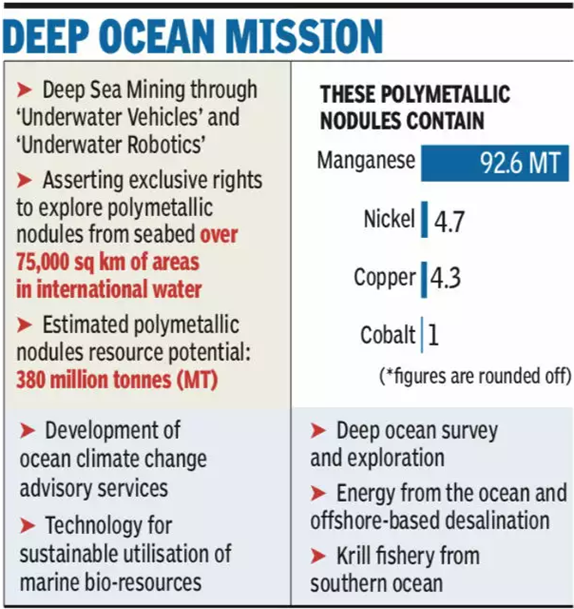
MATSYA 6000:
MATSYA 6000 is being designed and developed by the National Institute of Ocean Technology (NIOT), Chennai under the Ministry of Earth Sciences.
- It has an endurance of 12 hours under normal operation and 96 hours in case of emergency for human safety.
- Manned submersible facilitates the direct observation by the human in deep ocean in exploring mineral resources rich in nickel, cobalt, rare earths, manganese etc. and collection of samples, which can be used for analysis.

Significance of the mission:
- With the advancing subsea technologies, the recent Fendouzhe manned submersible developed by China in 2020 has touched ~11000m water depths.
- With the launch of this Unique Ocean Mission, India joins the the elite club of nations such as USA, Russia, Japan, France and China to have such underwater vehicles for carrying out subsea activities.
Importance of Deep Ocean exploration for India:
- India has a unique maritime position. Its 7517 km long coastline is home to nine coastal states and 1382 islands.
- For India, with its three sides surrounded by the oceans and around 30 per cent of the country's population living in coastal areas, ocean is a major economic factor supporting fisheries and aquaculture, tourism, livelihoods and blue trade.
- The Government of India's Vision of New India by 2030 enunciated in February 2019 highlighted the Blue Economy as one of the ten core dimensions of growth.
Source:
3 people to be sent 6,000 meters below sea level as a part of deep sea mission: Jitendra Singh | Mint (livemint.com)
Photocatalysis: - Edukemy Current Affairs
Context: Recently, a study has reported a way to achieve a relatively high efficiency in an artificial photosynthesis reaction in which water is split into oxygen and hydrogen using sunlight and a catalyst.
The technique is called photocatalysis.
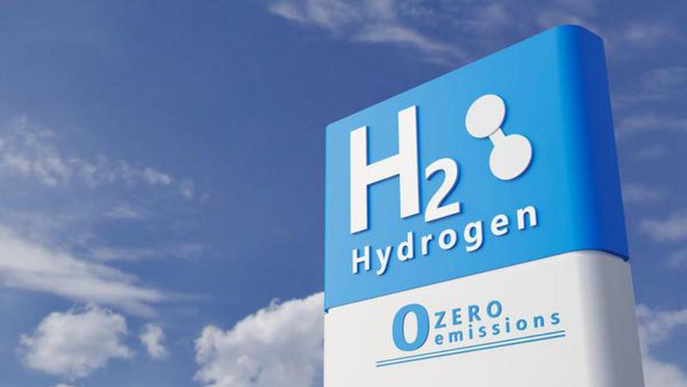
What is Photocatalysis?
Photocatalysis is a type of catalysis that results in the modification of the rate of a photoreaction - a chemical reaction that involves the absorption of light by one or more reacting species - by adding substances (catalysts) that participate in the chemical reaction without being consumed.
Key points about Photocatalysis:
- Photocatalytic STH (solar-to-hydrogen) is inspired by photosynthesis, where leaves use energy from incident sunlight to split water into oxygen and hydrogen.
- The process consists of a semiconductor photocatalyst wafer immersed in freshwater or seawater.
- When photons in sunlight strike the wafer, they dislodge electrons in its atoms, which trigger a redox reaction in the water and separate hydrogen and oxygen.
- The energy source is sunlight and the feedstock is water – both abundant on Earth and green by nature.
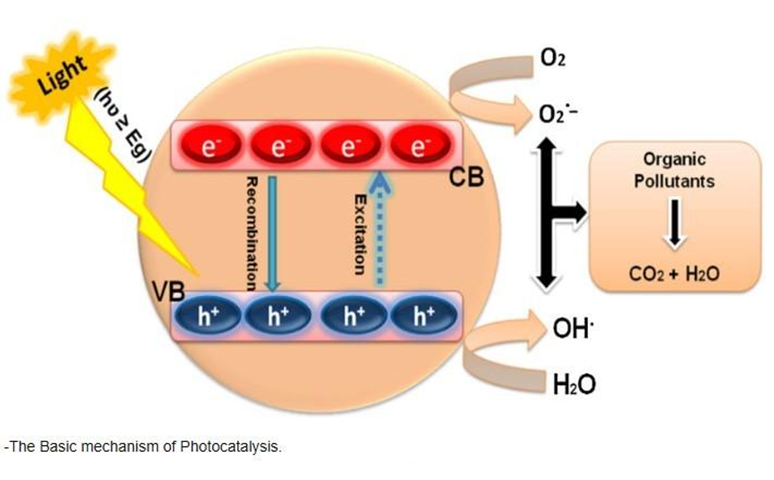
Significance:
- Considering electricity is the biggest component of the cost of green hydrogen, the government effectively needs cheaper renewable energy – the breakthrough could also come from cutting-edge technologies like photocatalysis.
Conventional way to produce green hydrogen:
- The conventional way to produce green hydrogen is electrolysis, where water is split into its constituent elements by passing a large current through it.
- If both the electrolyser and the source of electricity are green, the resulting hydrogen is also green.
- Currently, most of the hydrogen in India is produced by steam-reforming: methane is mixed with water in a reactor at 800-900º C and 20-30 atmospheres of pressure to yield hydrogen and carbon monoxide. The resulting hydrogen is thus ‘grey’.
Source:
Using artificial photosynthesis to make green hydrogen at record efficiency - The Hindu
Central food regulator notifies standards for Basmati rice:
Context:
For the first time in the country, the Food Safety and Standards Authority of India (FSSAI) has specified identity standards for basmati rice (including brown basmati, milled basmati, parboiled brown basmati, and milled parboiled basmati).
The new standards will be enforced with effect from August 1, 2023.
The objective is: to ensure that only real basmati rice is sold as basmati.
Identity and quality parameters:
The standards specify various identity and quality parameters for basmati rice such as
- average size of grains and their elongation ratio after cooking;
- maximum limits of moisture, amylose content, and uric acid;
- proportion of defective or damaged grain allowed; and
- the level of incidental presence of non-basmati rice.
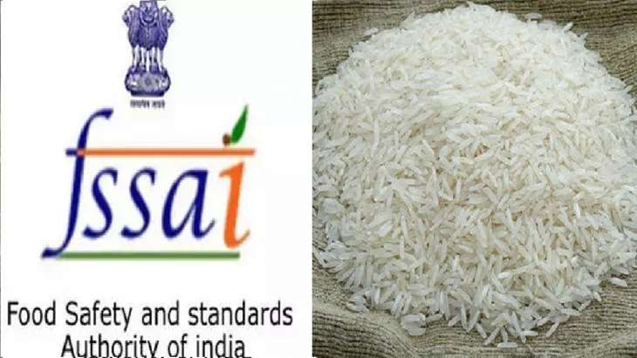
Basmati rice:
- Basmati rice is a premium variety of rice cultivated in the Himalayan foothills of the Indian sub-continent and is universally known for its long grain size, fluffy texture, and unique aroma and flavour.
- Due to its unique quality attributes, basmati is a widely consumed variety of rice both domestically and globally and India accounts for two thirds of its global supply.
Need for:
Being a premium quality rice and fetching a price higher than the non-basmati varieties, basmati rice is prone to various types of adulteration for economic gains which may include, among others, undeclared blending of other non-basmati varieties of rice.
Concerns:
Rice manufacturers and distributors in the country are apprehensive about the practicality of new standards.
- How is it practically possible to check whether the rice is naturally aromatic or not!
- As far as brown rice is concerned not many eat brown rice and cleaning of rice is important to export as most countries won’t accept rice that is not cleaned.
- Some rules sound good on paper but are very difficult to implement in reality.
Source:
FSSAI notifies first-ever regulatory standards for basmati rice | Business Standard News (business-standard.com)
Global Risks Report 2023: - Edukemy Current Affairs
Context:
The World Economic Forum (WEF) has published "The Global Risks Report 2023" (18th Edition), which lists the biggest risks for India over the short and medium terms.
- These risks include cost-of-living crisis, digital inequality, geopolitical competition for resources, natural disasters, and extreme weather events.
- The Global Risks Report 2023 summarises the findings of the latest Global Risks Perception Survey (GRPS).
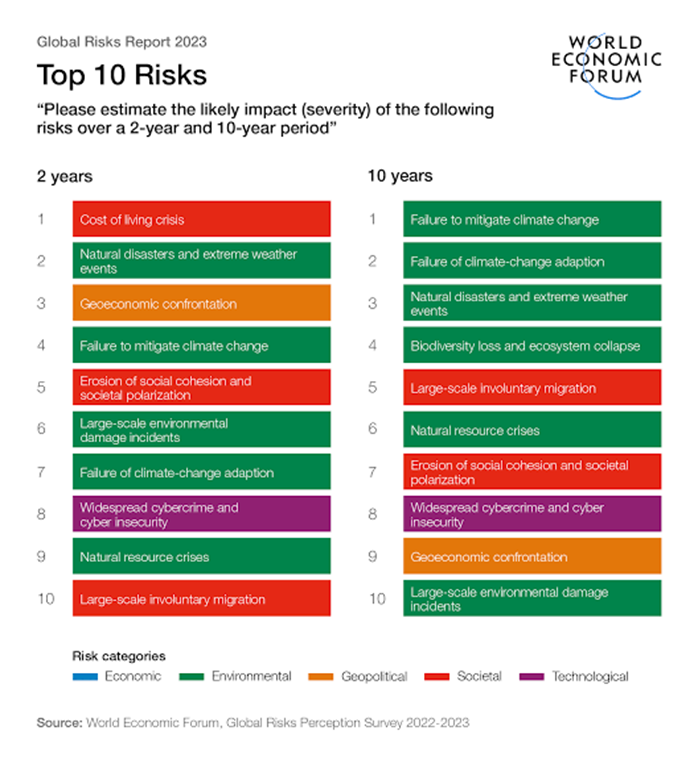
Key Findings:
- Climate change and environmental degradation are considered the most pressing global risks, with extreme weather events and natural disasters ranking among the top five risks in terms of likelihood and impact.
- Cyberattacks and data breaches are also identified as major risks, with increasing concerns about the security of critical infrastructure and the potential for large-scale disruption.
- Economic risks, such as inequality and unemployment, also feature prominently in the report, highlighting the need for inclusive and sustainable economic growth.
- Political risks, including populism and political polarization, are also noted as potential drivers of instability and conflict.
- The report also highlights the interconnectivity of these risks, emphasizing the need for a holistic and integrated approach to risk management.
Recommendations:
- The report calls for increased international cooperation and collaboration to address global risks, particularly in the areas of climate change and cyber security.
- It also highlights the importance of investing in resilience and preparedness, particularly in vulnerable communities and critical infrastructure.
- The report also emphasizes the need for a more inclusive and sustainable economic model, which prioritizes the needs of all citizens and promotes equitable growth.
- It calls for leaders to address the root causes of political risks, such as inequality and unemployment, and to work towards building more inclusive and cohesive societies.
Sources: WEF.
The demand for greater Tipraland:
The Demand:
- There is a demand for a separate state of ‘Greater Tipraland’ for the indigenous communities of the north-eastern state. They want the Centre to carve out the separate state under Article 2 and 3 of the Constitution.

What is Greater Tipraland?
‘Greater Tipraland’ is essentially an extension of the ruling tribal partner Indigenous Peoples Front of Tripura – IPFT’s demand of Tipraland, which sought a separate state for tribals of Tripura.
- The new demand seeks to include every tribal person living in indigenous area or village outside the Tripura Tribal Areas Autonomous District Council (TTAADC) under the proposed model.
- However, the idea doesn’t restrict to simply the Tripura tribal council areas, but seeks to include ‘Tiprasa’ of Tripuris spread across different states of India like Assam, Mizoram etc. as well, even those living in Bandarban, Chittagong, Khagrachari and other bordering areas of neighbouring Bangladesh.
The demand for greater Tipraland is driven by various factors such as economic, political, and cultural reasons.
Economic Reasons: The TTAADC area is one of the most underdeveloped regions of India, with a high poverty rate and low human development index. The indigenous people of the region have been facing economic marginalization for decades.
Political Reasons: The indigenous people of the region have been marginalized politically for decades. The state government has not been able to provide adequate representation to the people living in the TTAADC area.
Cultural Reasons: The indigenous people of the region have been facing cultural marginalization for decades. The state government has not been able to provide adequate protection to the cultural heritage of the indigenous people.
Sources: the Hindu.
The National Commission for Protection of Child Rights:
Context: National Commission for Protection of Child Rights (NCPCR) is celebrating its 18th Foundation Day.
About the NCPCR:
- National Commission for Protection of Child Rights (NCPCR) is a statutory body constituted under Section 3 of the Commission for Protection of Child Rights (CPCR) Act, 2005 to protect the child rights and other related matters in the Country.
- NCPCR was set up in March 2007 and works under the administrative control of the Ministry of Women & Child Development, Government of India.

Mandate:
- The Commission's Mandate is to ensure that all Laws, Policies, Programmes, and Administrative Mechanisms are in consonance with the Child Rights perspective as enshrined in the Constitution of India and also the UN Convention on the Rights of the Child.
Definition of a Child:
- Under the CPCR Act, The Child is defined as a person in the 0 to 18 years age group.
Composition of NCPCR:
- This commission has a chairperson and six members.
- Of which at least two should be women.
- These are appointed by Central Government for three years.
- The maximum age to serve in commission is 65 years for Chairman and 60 years for members.
Source: https://pib.gov.in/PressReleasePage.aspx?PRID=1890797
Harvest Festivals in India: - Edukemy Current Affairs
‘Lohri, Makar Sankranti and Pongal have been celebrated all across the country on 13th and 14th Janurary. These festivals are considered as ‘Harvest Festivals in India’.
The festivities associated with the day is known by different names in different parts of the country:
- Lohri in north India,
- Sukarat in central India,
- Bhogali Bihu in Assam,
- Pongal in Tamil and other South Indian states.
Lohri: Lohri is primarily celebrated in Punjab and some parts on North India.
- It is observed a night before Makar Sankranti.
- It is essentially termed as the festival of the farmers and harvest, whereby, the farmers thank the Supreme Being.
Makar Sankranti:
- It marks the onset of summer and the six months auspicious period for Hindus known as Uttarayan – the northward movement of the sun.
- The Gujarat government has been hosting the International Kite Festival since 1989.
Pongal: it is a four-day occasion is observed in the month of Thai in Tamilnadu.
- It is celebrated when crops such as rice are harvested and people show their gratitude to the almighty and the generosity of the land.
- The word Pongal means ‘overflow’ or ‘boiling over’, Also known as Thai Pongal.
- Tamilians celebrate the occasion by making traditional designs known as kolams in their homes with rice powder.
Corbusier’s Chandigarh: - Edukemy Current Affairs
Context:
The Supreme Court has directed the Centre and the Chandigarh administration to take a number of steps to preserve Le Corbusier’s Chandigarh.
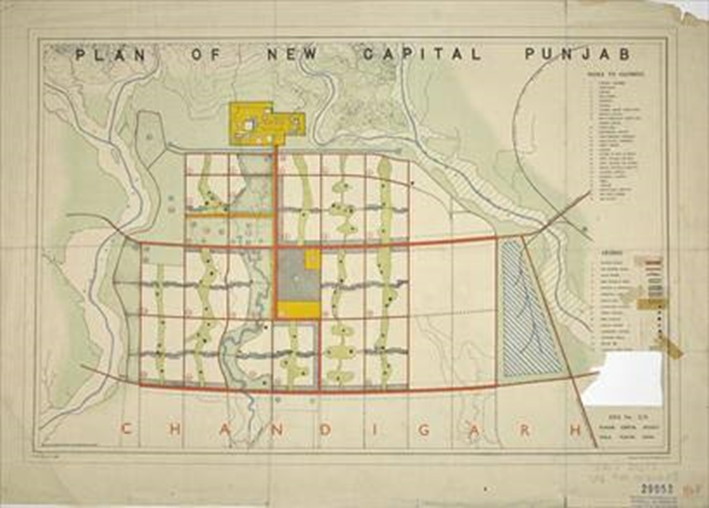
What's the issue?
The case dealt with The Chandigarh Apartment Rules, 2001, as per which it was permitted to subdivide single residential units into more than one apartment. Though repealed in 2007, the same was reintroduced in the Draft Chandigarh Master Plan-2031.
Who was Le Corbusier?
Le Corbusier was a Swiss-French architect, designer, painter, urban planner and one of the pioneers of what is now regarded as modern architecture.
- In 2016, seventeen projects by Le Corbusier in seven countries were inscribed in the list of UNESCO World Heritage Sites as The Architectural Work of Le Corbusier, an Outstanding Contribution to the Modern Movement. Chandigarh is one of the sites.
Key features of Le Corbusier's Chandigarh Plan:
Corbusier's plan divided the city into three parts:
- The "head" would contain the Capital Complex and the "heart" the commercial area.
- The "hands" would host recreational spaces and academic institutions.
- His rectangular grid encouraged self-sufficient units and divided the city into different sectors.
Criticism:
- Critics claim that the plan only benefited the wealthy and government officials, while poor were excluded from the master plan.
- The wage earners' location outside city limits made it difficult for them to access jobs.
- Critics say that while the city was well-designed, it was not well-planned.
- Thousands of locals were evicted and refugees were sent away to make way for the master plan.
Sources: Indian Express.
Neelakurinji a protected species now:
Context:
The Ministry of Environment, Forest and Climate Change (MoEF) has listed Neelakurinji ( Strobilanthes kunthiana) under Schedule III of the Wildlife (Protection) Act, 1972, including it on the list of protected plants.
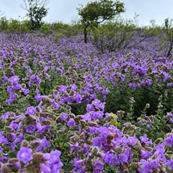
- Those who uproot or destroy the plant will invite a fine of ₹25,000 and three years’ imprisonment. The cultivation of Neelakurinji and its possession is not allowed, according to the order.
Neelakurinji:
- Kurinji or Neelakurinji (Strobilanthes kunthianus) is a shrub that is found in the shola forests of the Western Ghats in South India.
- Nilgiri Hills, which literally means the blue mountains, got their name from the purplish blue flowers of Neelakurinji that blossoms only once in 12 years.
- The Paliyan tribal people living in Tamil Nadu used it as a reference to calculate their age.
Conservation: Core area of Kurinjimala Sanctuary, in Idukki district of Kerala, protects the kurinji.
Sources: the Hindu.
Row over NJAC: - Edukemy Current Affairs
Context:
Striking down of NJAC was ‘unparalleled in the democratic history of the world’, says vice president.
- Jagdeep Dhankar’s statement came at a time when the government and the judiciary are in a tussle on the process of making judicial appointments in the country.
Background:
On 16 October 2015, in a 4-1 majority verdict, the Supreme Court held that both the Constitution (Ninety-ninth Amendment) Act, 2014, and the National Judicial Appointments Commission (NJAC) Act, 2014, were unconstitutional as it would undermine the independence of the judiciary.
The majority said the two laws affect the independence of the judiciary, and judicial appointments, among other things, should be protected from executive control.
About NJAC and the Act:
NJAC is a body responsible for the appointment and transfer of judges to the higher judiciary in India. JAC Bill sought to replace the collegium system of appointing the judges of Supreme Court and 24 High Courts with judicial appointments commission wherein the executive will have a say in appointing the judges.
A new article, Article 124A, (which provides for the composition of the NJAC) was to be inserted into the Constitution.
The Bill provided for the procedure to be followed by the NJAC for recommending persons for appointment as Chief Justice of India and other Judges of the Supreme Court (SC), and Chief Justice and other Judges of High Courts (HC).
How do proponents of NJAC defend it?
According to them, the enactment of the 99th Amendment was intended at redressing the imbalance created by the verdict of court in second judges case.
For them, NJAC would have been a more broad-minded forum, providing a genuine chance to participate and influence the selection of our higher judiciary — not merely to the Supreme Court and the executive, but also to laypersons (eminent persons) outside the constitutional framework.
Why did the court strike down the NJAC act?
The court has held that the appointment of judges, coupled with primacy of judiciary and the CJI, was part of the basic structure of the Constitution and that the parliament, through NJAC act, violated this basic structure.
Sources: the Hindu.
Madras HC Directives for Jallikattu
- Context: Recently Madras HC has issued a series of directions for Jallikattu.

- Jallikattu is a traditional bull taming sport that is popular in Tamil Nadu.
- It celebrated every year in January on Pongal.
- Famous breeds: Pulikulam, Theni hill cattle, Kangayam, Umblachery and Alambadi
- Associated concerns
-
- Article 29: protection of cultural and educational rights.
- Prevention of Cruelty to Animals Act of 1960
- Article 48: it directs the state to ban slaughter of animals and to organise agriculture and animal husbandry on modern and scientific lines
- Latest legal interventions
-
- Prevention of Cruelty to Animals (Tamil Nadu Amendment) Act 2017 and Prevention of Cruelty to Animals (Conduct of Jallikattu) Rules 2017: It allowed continuation of bull taming sport in Tamil Nadu.
- 2018: The case was referred to constitutional bench of SC and is pending.
- Karnataka has a similar sport called Kambala.
Source:
https://m.timesofindia.com/city/madurai/hc-issues-directions-on-conduct-of-jallikattu-at-avaniyapuram/amp_articleshow/96954559.cms
https://www.thehindu.com/life-and-style/meet-the-athletic-native-bulls-of-tamil-nadu-popular-at-jallikattu-during-pongal-festivities/article66356650.ece
Money Laundering - Edukemy Current Affairs
- Context: Recently Jharkhand HC considered money laundering as an independent offence.
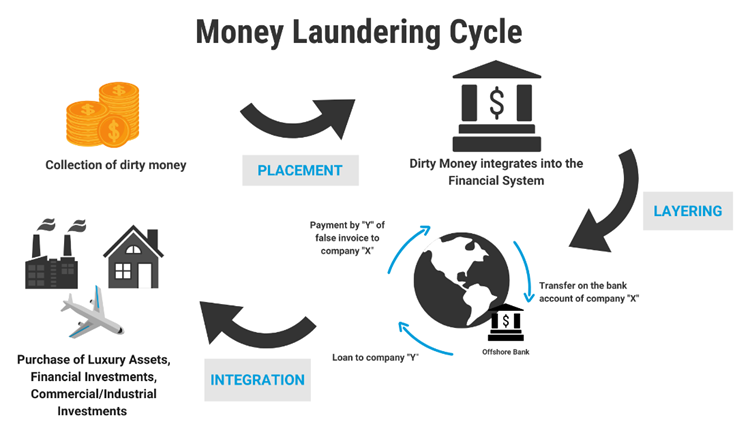
- Money laundering is the illegal process of making large amounts of money generated by criminal activity, such as drug trafficking or terrorist funding, appear to have come from a legitimate source.
- Certain national efforts to combat money laundering
-
- The Conservation of Foreign Exchange and Prevention of Smuggling Activities Act, 1974
- The Benami Transactions (Prohibition) Act, 1988
- The Indian Penal Code, 1860 and Code of Criminal Procedure, 1973
- The Narcotic Drugs and Psychotropic Substances Act, 1985
- Prevention of Money Laundering Act 2002
- Certain global efforts to combat Money Laundering
-
- The Vienna Convention
- The 1990 Council of Europe Convention
- G-10’s Basel Committee statement of principles
- The International Organization of Securities Commissions (IOSCO)
- The Financial Action Task Force
Source:
https://indianexpress.com/article/india/money-laundering-an-independent-offence-says-hc-8378901/#:~:text=MONEY%20LAUNDERING%20is%20an%20independent,of%20Chief%20Minister%20Hemant%20Soren.
https://www.unodc.org/unodc/en/money-laundering/overview.html
GenAI: A Crucial Game-Changer for Society & Industry
Context:
The World Economic Forum (WEF) has released an article discussing the potential impact of Generative AI on various industries and society as a whole. The article suggests that Generative AI has the potential to be a game-changer and could revolutionize the way industries operate, leading to a new era of innovation and growth.
What is Generative AI?
Generative AI is a type of Artificial Intelligence that is capable of creating new content, such as images, videos, and text, based on a set of rules or guidelines. This is different from traditional AI, which is designed to perform specific tasks, such as image recognition or natural language processing.
- Generative AI is capable of creating new and unique content, making it a powerful tool for various industries.
Impact on Industries:
Generative AI has the potential to revolutionize various industries, such as media, entertainment, and advertising. In the media and entertainment industry, Generative AI can be used to create new and unique content, such as music, videos, and games. In the advertising industry, Generative AI can be used to create personalized advertisements based on a customer's preferences and interests.
Impact on Society:
Generative AI has the potential to have a significant impact on society as a whole. For example, Generative AI can be used to create new and innovative products and services, leading to economic growth and job creation. Additionally, Generative AI can be used to improve healthcare, education, and transportation, leading to a better quality of life for everyone.
Cons:
- It may lead to a loss of jobs as machines can replace human in certain fields.
- It may also cause a problem if it is used to create fake news, videos, images, etc.
- There is a possibility that it may lead to an unequal distribution of wealth and power.
Ethical concerns:
- The use of Generative AI raises ethical concerns, particularly when it comes to privacy, transparency, and accountability.
- It may lead to biased AI if the data used to train it is biased.
- There is a risk that it may be used to create deepfake videos which can be misused to spread misinformation or propaganda.
- There is a need for regulations and guidelines on the use of Generative AI to ensure it is used in a responsible and ethical manner.
What next?
The WEF encourages industry leaders, policymakers, and the public to take note of the potential of Generative AI and to work together to harness its full potential. As with any new technology, it is important to address any potential negative impacts and ensure that Generative AI is used in a responsible and ethical manner.
Bill Targets Big Tech Monopolies
Context: The government is planning to introduce a legislation that would enable regulators to stop giant digital platforms' anticompetitive behaviour.
- Such ex-ante regulation has also been advised by the parliamentary standing committee on finance and the Competition Commission of India (CCI).
- A fine of up to 10% of the company's annual global revenue, or up to 20% in the case of persistent violations, could be imposed for noncompliance.
Need for:
- On its platforms, Big Techs frequently favor their own services or those of their subsidiaries.
- In digital markets, several sizable online platforms serve as "gatekeepers."
Source:
Govt plans legislation to pre-empt monopolistic practices of big tech cos | Latest News India - Hindustan Times
What is Ottanthullal? - Edukemy Current Affairs
Ottanthullal or Thullal is an art form from Kerala. It is a recite-and-dance art-form famous for its humour and social satire.
- Thullal is known for its simplicity.
- Kunchan Nambiar, one of the Prachina Kavithrayam, introduced this art form in the eighteenth century.
- The performance consists of a performer supported by a singer who repeats the verses and is accompanied by an orchestra of mridangam or thoppimaddalam (percussions) and cymbals.
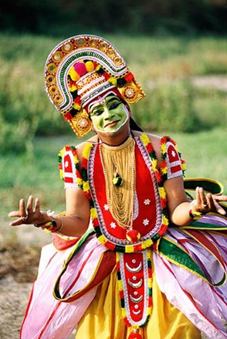
SPRINT scheme: - Edukemy Current Affairs
Context: An agreement was recently signed between Indian Navy and Sagar Defence Engineering Pvt. Ltd for armed autonomous boat swarms under ‘SPRINT’.
What is SPRINT?
- ‘SPRINT’ stands for Supporting Pole-vaulting In R&D through Innovations for Defence Excellence (IdeX), Naval Innovation and Indigenisation Organisation (NIIO) and Technology Development Acceleration Cell (TDAC).
- ‘SPRINT’ aims to develop 75 indigenous technologies for the Navy.
- It is an initiative to promote development of niche defence technologies by domestic companies.
- It was launched in last 2022.
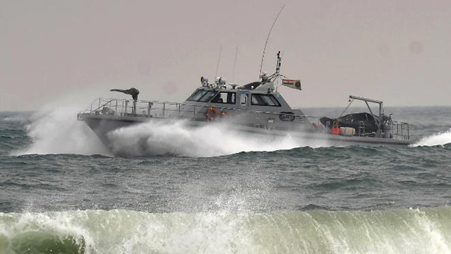
Source:
Indian Navy signs contract for autonomous armed boat swarms under SPRINT scheme - The Hindu
New reactor powered by sun: - Edukemy Current Affairs
Context: Researchers from the University of Cambridge, the United Kingdom have developed a system that can transform plastic waste and greenhouse gases into sustainable fuels and other valuable products – using just the energy from the sun.
- The reactor uses a process called photocatalytic conversion, in which a catalyst is used to speed up a chemical reaction when exposed to light.
- The reactor is able to break down plastic into its component parts, which can then be converted into fuel.
- The researchers believe that this technology could be used to help address the problem of plastic pollution, as well as provide a source of renewable fuel.

Source:
New reactor powered by sun can convert plastic, CO2 into fuel (downtoearth.org.in)
Voice of Global South summit: - Edukemy Current Affairs
Context: In a new and unique initiative, India hosted a special virtual summit, the Voice of Global South summit.
Theme: Unity of Voice, Unity of Purpose’
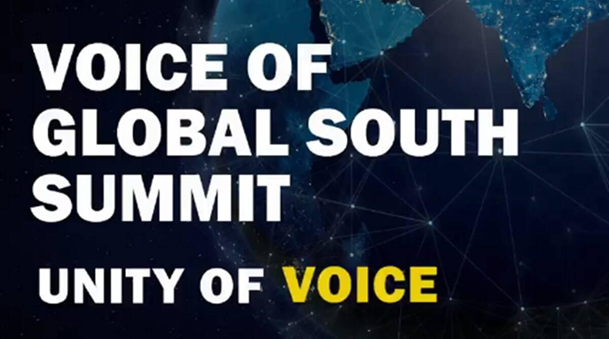
Key points:
- It envisages bringing together countries of the Global South to share their perspectives and priorities on a common platform.
- More than 120 countries are being invited to participate in this Summit.
- Global South refers to the developing and the less-developed countries of the world.
Source:
India to virtually host Voice of Global South summit, 120 countries to be invited | India News,The Indian Express
VSHORAD missile system - Edukemy Current Affairs
Context: The Defence Acquisition Council (DAC) accorded Acceptance of Necessity (AoN) to procure the ‘Very Short Range Air Defence System’ or VSHORAD (IR Homing) missile system.
What is the missile system?
- Meant to kill low altitude aerial threats at short ranges, VSHORADS is a man portable Air Defence System (MANPAD).
- It is designed and developed indigenously by DRDO’s Research Centre Imarat (RCI), Hyderabad, in collaboration with other DRDO laboratories and Indian Industry Partners.

Source:
How the VSHORAD missile system will boost the Indian Army’s mountain warfare prowess | Explained News,The Indian Express
Facial Recognition in Law Enforcement
Context:
Police in Brazil want to use facial recognition technology to identify the rioters who attacked government buildings, even though experts have warned of racial profiling risks.
Facial recognition technology is a tool that uses algorithms to match facial features to a database of images, with the goal of identifying a person.
- Law enforcement agencies around the world have begun using facial recognition technology to assist in investigations and to identify suspects in crimes.
- The use of facial recognition technology by law enforcement agencies has raised ethical concerns, particularly in relation to privacy, bias, and accuracy.
Issues:
Privacy: The use of facial recognition technology by law enforcement agencies raises concerns about privacy and civil liberties, as it allows law enforcement agencies to collect and store vast amounts of personal data on individuals.
Bias: There have been concerns that facial recognition technology is biased, particularly against people of color and women. This is due to the fact that the technology is often trained on data sets that are not diverse, leading to inaccurate results.
Accuracy: There have also been concerns about the accuracy of facial recognition technology, as it has been known to produce false positives and false negatives.
Arguments for the use of Facial Recognition Technology:
- Law enforcement agencies argue that facial recognition technology is a valuable tool that can assist in investigations and can help to identify suspects in crimes.
- They also argue that the use of facial recognition technology can help to increase public safety and reduce crime.
Arguments against the use of Facial Recognition Technology:
- Civil liberties and privacy advocates argue that the use of facial recognition technology by law enforcement agencies is a violation of privacy and civil liberties.
- They also argue that the technology is biased and inaccurate, and that it is being used in a way that disproportionately affects marginalized communities.
Ethical concerns:
The use of facial recognition technology by law enforcement agencies raises ethical concerns, particularly in relation to privacy, bias, and accuracy.
While law enforcement agencies argue that the technology is a valuable tool that can assist in investigations and increase public safety, civil liberties and privacy advocates argue that the technology is a violation of privacy and civil liberties, and that it is being used in a way that disproportionately affects marginalized communities.
Need of the hour:
It is important for policymakers and law enforcement agencies to consider these ethical concerns and to ensure that the use of facial recognition technology is done in a responsible and ethical manner.
Share the article
Get Latest Updates on Offers, Event dates, and free Mentorship sessions.

Get in touch with our Expert Academic Counsellors 👋
FAQs
UPSC Daily Current Affairs focuses on learning current events on a daily basis. An aspirant needs to study regular and updated information about current events, news, and relevant topics that are important for UPSC aspirants. It covers national and international affairs, government policies, socio-economic issues, science and technology advancements, and more.
UPSC Daily Current Affairs provides aspirants with a concise and comprehensive overview of the latest happenings and developments across various fields. It helps aspirants stay updated with current affairs and provides them with valuable insights and analysis, which are essential for answering questions in the UPSC examinations. It enhances their knowledge, analytical skills, and ability to connect current affairs with the UPSC syllabus.
UPSC Daily Current Affairs covers a wide range of topics, including politics, economics, science and technology, environment, social issues, governance, international relations, and more. It offers news summaries, in-depth analyses, editorials, opinion pieces, and relevant study materials. It also provides practice questions and quizzes to help aspirants test their understanding of current affairs.
Edukemy's UPSC Daily Current Affairs can be accessed through:
- UPSC Daily Current Affairs can be accessed through Current Affairs tab at the top of the Main Page of Edukemy.
- Edukemy Mobile app: The Daily Current Affairs can also be access through Edukemy Mobile App.
- Social media: Follow Edukemy’s official social media accounts or pages that provide UPSC Daily Current Affairs updates, including Facebook, Twitter, or Telegram channels.




